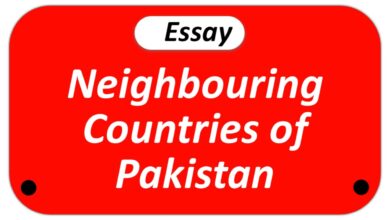Power of the President of Islamic Republic of Pakistan Under 1973 Constitution
Power of The President

According to the Article 41 of the constitution of 1973, president is the head of state and represents the unity of Islamic Republic of Pakistan. Under the constitution no person will be eligible for the office unless he is a Muslim not less than forty-five years of age, and qualified to be elected as member of the National Assembly. The president shall not hold any office of profit in the service of Pakistan or occupy any other position carrying the right of remuneration for elections or member in the National or a Provincial Assembly. And in case he is, he will vacate his seat. Mr. Farooq Laghari was elected as member of national assembly form D. G Khan. He upon becoming a president vacated his seat. Under the democratic spirit, not mentioned in constitution, the president shall be a neutral man and shall not display his political bias in functioning his exercising of powers.
The president is elected indirectly by the members of National Assembly, senate, and provincial Assemblies the number of the provincial assemblies of Punjab, Sindh and NWFP will be equal to the strength of Balochistan Assembly, the one with smallest number of seats due to the less population of the province..
In case president is unable to exercise his role because of sickness, his visit outside the country, or other necessity, the chairman of senate exercises his powers until he comes back. In case chairman is unable to perform the role, the speaker of National Assembly will occupy the office, in case, president of Pakistan resigns, he shall send his resignation to the speaker.
Function and powers of president:
Under the constitution of 1973, the president of Pakistan is to act upon the advice of PM. Article 58 says that “In the performance his functions, the president shall act on and in accordance with the advice of the PM and such advice shall be binding on him
Executive powers:
The president is the chief executive of the nation, therefore, all executive orders are issued in his name similarly, all executive appointments are made in his name, the federal civil service comes under the president, and federal servants can exercise their powers under the name of the president.
Legislative powers:
The president under the constitution has many legislative powers. The parliament of Pakistan consists of national assembly, senate and president of Pakistan. In other words a president is a constitutional head of the parliament.
After the general elections, the president summons the inaugurator session of the parliament. Under the 17th amendment a president is not bound to follow the advice of PM in summoning or dissolving it. Under the 17th amendment president could return a bill other than a money bill to the parliament for reconsideration. He can still send the bill. The president has power to promulgate ordinance whenever circumstances exist which render it necessary to take immediate action for.
Judicial powers:
The president has a number of Judicial powers. All judges of supreme court and high courts, including chief justices, are appointed by the president. The powers of president in the appointment of judges are bona-fide. He though consult chief justice of supreme court of high court before an appointment is made, and asks the opinion of PM.The president is final court of appeal.
Military Powers:
The president is commander-in-chief of all defense forces in Pakistan. He appoints Chief of the Army staff COAS Chairman of the joint chief of staff, and chiefs of Airforce and Navy. The president has an importance in military and strategic affairs of nation.
Emergency Powers:
The president possesses important emergency powers under the constitution. Section 1 and 2 of Article 232 deal with this aspect. It says that the executive authority of the federation shall extend to the giving of directions to the province as to be exercised.



